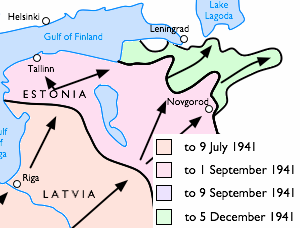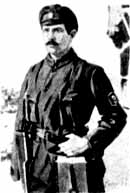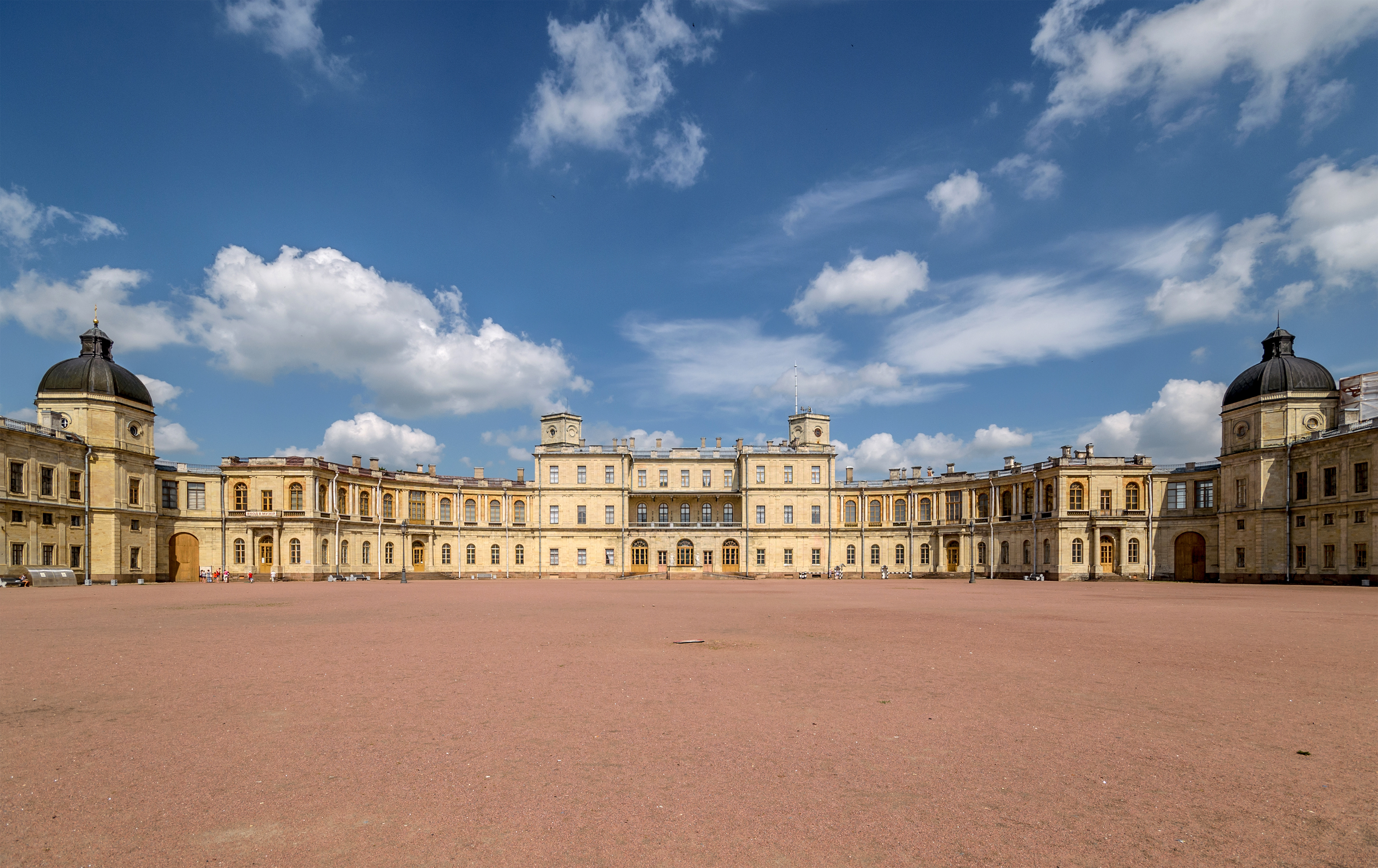|
Johannes Soodla
Johannes Soodla (14 January 1897 in Kudina Parish, (now in Palamuse Parish) – 16 May 1965) was an Estonian military officer during World War I, Estonian War of Independence and World War II, serving in Kuperjanov's Partisan Battalion and the 20th Waffen Grenadier Division of the SS (1st Estonian). In 1944 he was promoted to Brigadeführer, which was the highest rank ascribed to any Estonian officer in the German army during World War II. In 1916 Soodla was mobilized in the Russian Army and was sent to a military school in Gatchina. He fought in World War I. In the Estonian War of Independence Soodla fought along with Julius Kuperjanov in the same unit. Soodla was a company commander. He fought in all the toughest battles in the war including the Battle of Paju where he took command of the battalion after Kuperjanov was wounded. After the war, the Estonian Cross of Liberty was awarded to Soodla. From 1920 to 1940 he served in the Estonian Army until released by Soviet Arm ... [...More Info...] [...Related Items...] OR: [Wikipedia] [Google] [Baidu] |
Governorate Of Estonia
The Governorate of Estonia, also known as the Governorate of Esthonia (Pre-reformed rus, Эстля́ндская губе́рнія, r=Estlyandskaya guberniya); et, Eestimaa kubermang was a governorate in the Baltic region, along with the Livonian and Courland Governorates. It is a part of the Imperial Russian administration ('' guberniya''), which is located in modern-day northern Estonia and some islands in the West Estonian archipelago, including the islands of Hiiumaa () and Vormsi (). The Governorate was established in 1796 when Paul I's reform abolished the Viceroyalty (''namestnik''). Previously, the Reval Governorate existed under Peter I's reign from the Treaty of Nystad, which ceded territory from Sweden to the newly established Russian Empire, until its inexistence in 1783. From the 1850s until 1914, the Estonian national awakening was influenced and characterized the governorate by general modernization, the reorganization into a modern European society, ... [...More Info...] [...Related Items...] OR: [Wikipedia] [Google] [Baidu] |
World War II
World War II or the Second World War, often abbreviated as WWII or WW2, was a world war that lasted from 1939 to 1945. It involved the World War II by country, vast majority of the world's countries—including all of the great powers—forming two opposing military alliances: the Allies of World War II, Allies and the Axis powers. World War II was a total war that directly involved more than 100 million Military personnel, personnel from more than 30 countries. The major participants in the war threw their entire economic, industrial, and scientific capabilities behind the war effort, blurring the distinction between civilian and military resources. Air warfare of World War II, Aircraft played a major role in the conflict, enabling the strategic bombing of population centres and deploying the Atomic bombings of Hiroshima and Nagasaki, only two nuclear weapons ever used in war. World War II was by far the List of wars by death toll, deadliest conflict in hu ... [...More Info...] [...Related Items...] OR: [Wikipedia] [Google] [Baidu] |
Occupation Of Estonia By Nazi Germany
During World War II, in the course of Operation Barbarossa, Nazi Germany invaded Estonia in July–December 1941, and occupied the country until 1944. Estonia had gained independence in 1918 from the then warring German and Russian Empires. However, in the wake of the August 1939 Nazi-Soviet Pact, the Stalinist Soviet Union had invaded and occupied Estonia in June 1940, and the country was formally annexed into the USSR in August 1940. Initially, in the summer of 1941, the German invaders were perceived by most Estonians as liberators from the Soviet terror, having arrived only a week after the mass deportation of tens of thousands of people from Estonia and other territories that had been occupied by USSR in 1939–1941: eastern Poland, Latvia, Lithuania, Bessarabia and Northern Bukovina. Although hopes were raised for the restoration of Estonia's independence, it was soon realized that Germans were but another occupying power. The Nazi German authorities exploited occ ... [...More Info...] [...Related Items...] OR: [Wikipedia] [Google] [Baidu] |
Omakaitse
The Omakaitse ('home guard') was a militia organisation in Estonia. It was founded in 1917 following the Russian Revolution. On the eve of the Occupation of Estonia by the German Empire the Omakaitse units took over major towns in the country allowing the Salvation Committee of the Estonian Provincial Assembly to proclaim the independence of Estonia. After the German Occupation the Omakaitse became outlawed. The Estonian Defence League was dissolved in 1940 after the Soviet occupation of Estonia. The Omakaitse was reestablished during the German Operation Barbarossa in 1941 by the Forest brothers who took control of the country before the German troops arrived allowing Jüri Uluots establish a co-ordinating council in Tartu to proclaim the provisional government of Estonia. The Germans disbanded the provisional government but allowed the armed units in the Omakaitse after Estonia became a part of the German-occupied Reichskommissariat Ostland. During World War II Omakaitse exis ... [...More Info...] [...Related Items...] OR: [Wikipedia] [Google] [Baidu] |
Germany
Germany,, officially the Federal Republic of Germany, is a country in Central Europe. It is the second most populous country in Europe after Russia, and the most populous member state of the European Union. Germany is situated between the Baltic and North seas to the north, and the Alps to the south; it covers an area of , with a population of almost 84 million within its 16 constituent states. Germany borders Denmark to the north, Poland and the Czech Republic to the east, Austria and Switzerland to the south, and France, Luxembourg, Belgium, and the Netherlands to the west. The nation's capital and most populous city is Berlin and its financial centre is Frankfurt; the largest urban area is the Ruhr. Various Germanic tribes have inhabited the northern parts of modern Germany since classical antiquity. A region named Germania was documented before AD 100. In 962, the Kingdom of Germany formed the bulk of the Holy Roman Empire. During the 16th century, ... [...More Info...] [...Related Items...] OR: [Wikipedia] [Google] [Baidu] |
Soviet Army
uk, Радянська армія , image = File:Communist star with golden border and red rims.svg , alt = , caption = Emblem of the Soviet Army , start_date = 25 February 1946 , country = (1946–1991)' (1991–1992) , branch = , type = Army , role = Land warfare , size = 3,668,075 active (1991) 4,129,506 reserve (1991) , command_structure = , garrison = , garrison_label = , nickname = "Red Army" , patron = , motto = ''За нашу Советскую Родину!(Za nashu Sovetskuyu Rodinu!)''"For our Soviet Motherland!" , colors = Red and yellow , colors_label = , march ... [...More Info...] [...Related Items...] OR: [Wikipedia] [Google] [Baidu] |
Julius Kuperjanov
Julius Kuperjanov VR I/2, VR II/2 and VR II/3 ( – 2 February 1919) was an Estonian military officer who was well-known in Estonia for being one of the Liberators of Tartu during the War of Independence and commander of the Tartumaa Partisan Battalion (renamed after him posthumously). Life Early life Kuperjanov was born on 11 October 1894 to Taniel and Liisi Kuperjanov (née Reben); a family of Estonian immigrants living in Pskov, Russia. Because his parents emigrated to Russia for work, they acquired a russified form of their family name (original Kupper). After returning to Estonia, they preserved this name. In 1904, his family returned to Estonia and resided in Tartu county. After five years of studies at the 2-class ministry school in Sipel Vana-Kuuste in Kambja municipality, Kuperjanov entered the in 1910. After finishing school in 1914, he asked to be appointed as a teacher at the village school in Kambja, due to the school set to be closed due to the lack of teac ... [...More Info...] [...Related Items...] OR: [Wikipedia] [Google] [Baidu] |
Gatchina
The town of Gatchina ( rus, Га́тчина, , ˈɡatːɕɪnə, links=y) serves as the administrative center of the Gatchinsky District in Leningrad Oblast, Russia. It lies south-south-west of St. Petersburg, along the E95 highway which links Saint Petersburg and Pskov. Population: It was previously known as ''Khotchino'', ''Gatchina'' (until February 14, 1923), ''Trotsk'' (until August 2, 1929), and ''Krasnogvardeysk'' (until January 28, 1944). Gatchina, the largest town in Leningrad Oblast, is best known as the location of the Great Gatchina Palace, one of the main residences of the Russian Imperial Family during the 18th and 19th centuries. The historic center and Gatchina Palace are part of the UNESCO World Heritage Site's " Historic Centre of Saint Petersburg and Related Groups of Monuments". Another popular tourist attraction in Gatchina is the Prioratsky Palace. Gatchina has placed highly in quality-of-life rankings in Russia. History Early ... [...More Info...] [...Related Items...] OR: [Wikipedia] [Google] [Baidu] |
Palamuse Parish
Palamuse ( et, Palamuse vald) was a rural municipality of Estonia, in Jõgeva County. It had a population of 2,509 (2006) and an area of 216 km². Populated places Palamuse Parish had one small borough, Palamuse, and 25 villages: Änkküla, Eerikvere, Ehavere, Imukvere, Järvepera, Kaarepere, Kaiavere, Kassivere, Kivimäe, Kudina Kudina (german: Kudding) is a village in Jõgeva Parish, Jõgeva County in eastern Estonia Estonia, formally the Republic of Estonia, is a country by the Baltic Sea in Northern Europe, Northern Europe. It is bordered to the north by the ..., Luua, Mullavere, Nava, Pikkjärve, Praaklima, Raadivere, Rahivere, Ronivere, Sudiste, Süvalepa, Toovere, Vaidavere, Vanavälja, Varbevere, Visusti. References External links * {{Jõgeva-geo-stub ... [...More Info...] [...Related Items...] OR: [Wikipedia] [Google] [Baidu] |
Kudina
Kudina (german: Kudding) is a village in Jõgeva Parish, Jõgeva County in eastern Estonia Estonia, formally the Republic of Estonia, is a country by the Baltic Sea in Northern Europe. It is bordered to the north by the Gulf of Finland across from Finland, to the west by the sea across from Sweden, to the south by Latvia, and .... (retrieved 28 July 2021) References Villages in Jõgeva County Kreis Dorpat {{Jõgeva-geo-stub ... [...More Info...] [...Related Items...] OR: [Wikipedia] [Google] [Baidu] |
Iron Cross
The Iron Cross (german: link=no, Eisernes Kreuz, , abbreviated EK) was a military decoration in the Kingdom of Prussia, and later in the German Empire (1871–1918) and Nazi Germany (1933–1945). King Frederick William III of Prussia established it on 17 March 1813 during the Napoleonic Wars (EK 1813). The award was backdated to the birthday (10 March) of his late wife, Queen Louise. Louise was the first person to receive this decoration (posthumously). Recommissioned Iron Cross was also awarded during the Franco-Prussian War (EK 1870), World War I (EK 1914), and World War II (EK 1939). During the 1930s and World War II, the Nazi regime superimposed a swastika on the traditional medal. The Iron Cross was usually a military decoration only, though there were instances awarded to civilians for performing military functions, including Hanna Reitsch, who received the Iron Cross, 2nd class, and Iron Cross, 1st Class, and Melitta Schenk Gräfin von Stauffenberg, who receiv ... [...More Info...] [...Related Items...] OR: [Wikipedia] [Google] [Baidu] |






